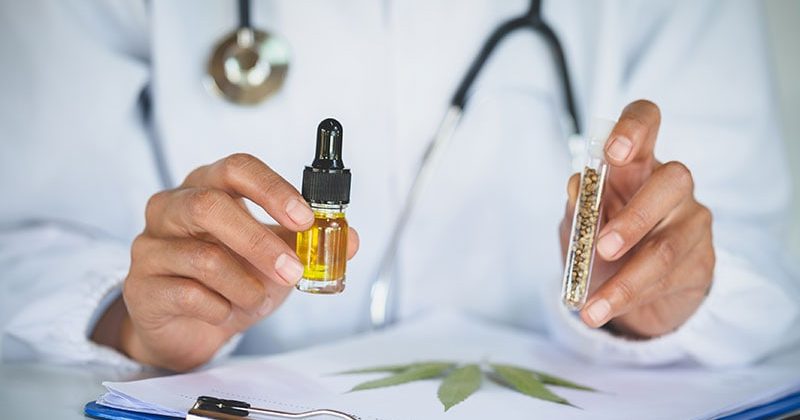A strong placebo response may be largely responsible for the significant pain reduction observed in clinical trials of cannabis-based therapies, results of a new meta-analysis suggest.
Investigators found that while the effect size of cannabinoids on pain intensity was significant, the placebo effect was about the same.
“The data from the present meta-analysis, including 1459 patients with clinical pain, suggest that placebo responses contribute significantly to the pain reduction seen in cannabinoid randomized clinical trials,” the investigators led by Filip Gedin, PhD, a post-doctoral fellow at the Karolinska Institute in Solna, Sweden, write.
The researchers speculate that the sheer amount of media attention surrounding cannabis trials may have contributed to a strong positive bias toward the efficacy of cannabinoids in pain therapy.
The findings were published online November 28 in the JAMA Network Open.
Positive Expectations
There is an increasing interest in medicinal cannabis for treatment of persistent pain, the investigators note. However, the limited superiority of cannabinoids vs placebo in clinical trials suggest “positive expectations may contribute to improvements.”
To evaluate the size of placebo responses in randomized clinical trials in which cannabinoids were compared with placebo for pain the investigators analyzed data from 20 placebo-controlled randomized controlled trials through 2021 that focused on the treatment of pain using cannabis-based products.
Nearly 1500 study participants (mean age = 51 years, 56% female, 44% male) aged between 33 years and 62 years reported neuropathic pain, pain from multiple sclerosis (MS), with a minority reporting “other” pain.
They received placebo or tetrahydrocannabinol (THC) and/or cannabidiol (CBD) extracts; or synthetic cannabinoids, which were administered in a variety of ways: via pill, spray, or by being smoked.
The researchers gathered information on pain intensity as measured in the randomized controlled trials, as well as the mass media effect of the articles, by extracting the headline, summary, and website addresses of blogs and media posts relating to the 20 articles, and rated the coverage as positive, neutral, or negative. To assess the methodological quality of the 20 trials, they used the Risk of Bias2 tool for randomized controlled trials.
While the effect size of the cannabinoids on pain intensity was large, that of the placebo was about the same, according to the results (P < .001 for both groups).
Impact of the Media
Investigators report that the 20 articles garnered 136 news mentions. While the team found no association between the percentage of positive news mentions and the outcome of the treatment of either cannabinoid or placebo, they noted that “news articles and blogs had a strong positive bias toward the efficacy of cannabinoids in pain therapy.”
The report states that although the “analyses into the association between article impact and influence with the effect size yielded no significant correlations, we can conclude that these articles receive considerable attention in the general media. Furthermore, this attention is independent of how biased the study is, how high the placebo response is, or how low the treatment effect is.”
In an op-ed in The Conversation, Gedin noted that “for treatments, such as cannabinoids, that receive a lot of media attention, we need to be extra rigorous [about study procedures] in our clinical trials.”
Commenting on the study for Medscape Medical News, Tory Spindle, PhD, who is assistant professor of psychiatry and behavioral sciences at Johns Hopkins University School of Medicine in Baltimore, Maryland, said that one way to control or combat the “expectancy effects” in future randomized controlled trials testing cannabinoids against placebo for pain, is to withhold information about the experimental drug from participants.

Tory Spindle
“Researchers could recruit pain patients and simply tell them they will be using an experimental pain medication, but not necessarily reveal it is a cannabis product. Also utilizing active control arms with established pain medications could help.”
The study was funded by Riksbankens Jubileumsfond. Neither Gedin nor Spindle have disclosed any relevant financial relationships.
JAMA Netw Open. 2022;5:e2243848. Full text
For more Medscape Neurology news, join us on Facebook and Twitter.
Source: Read Full Article
